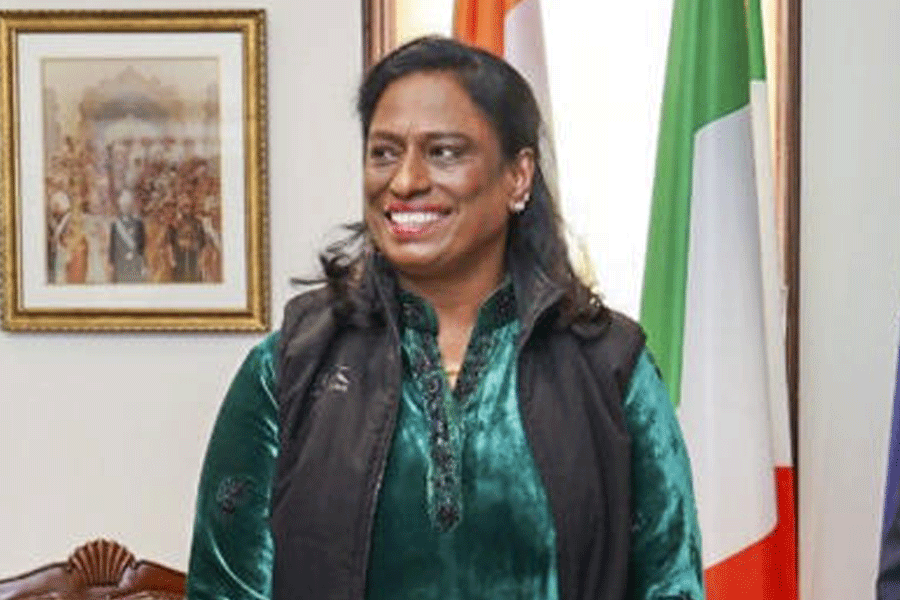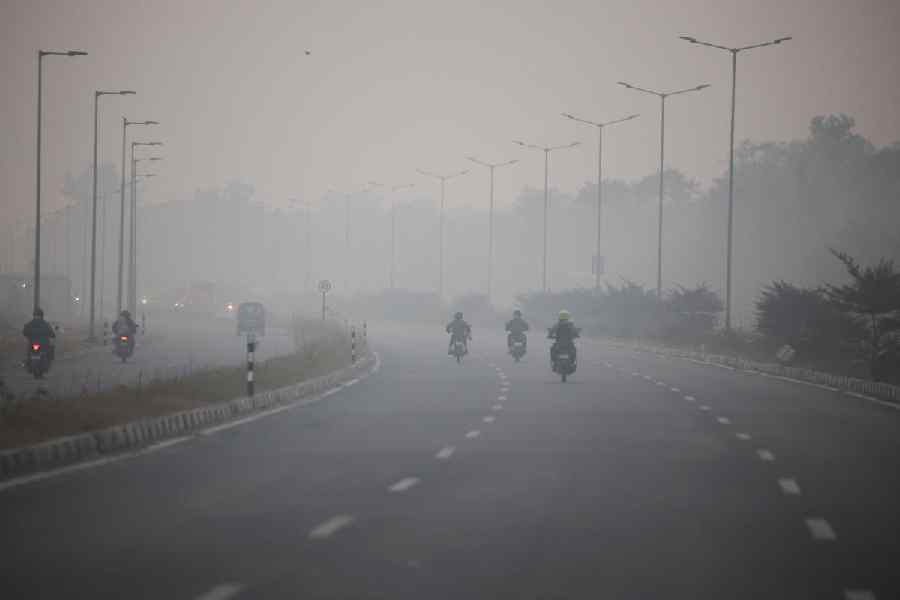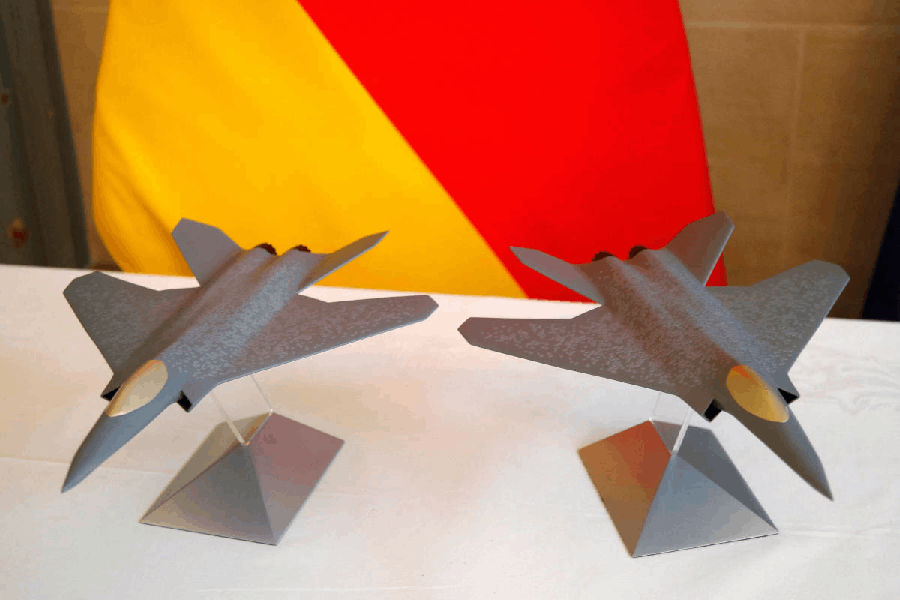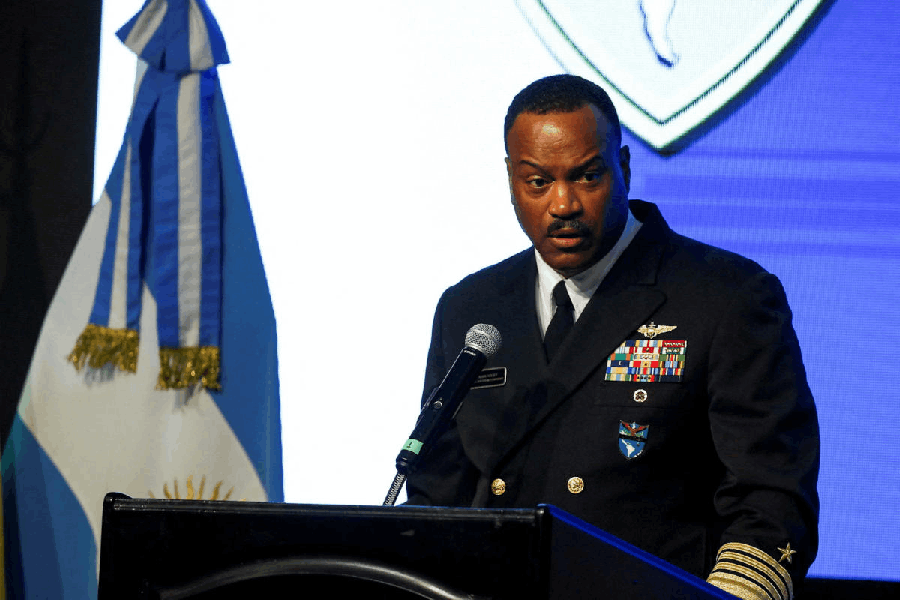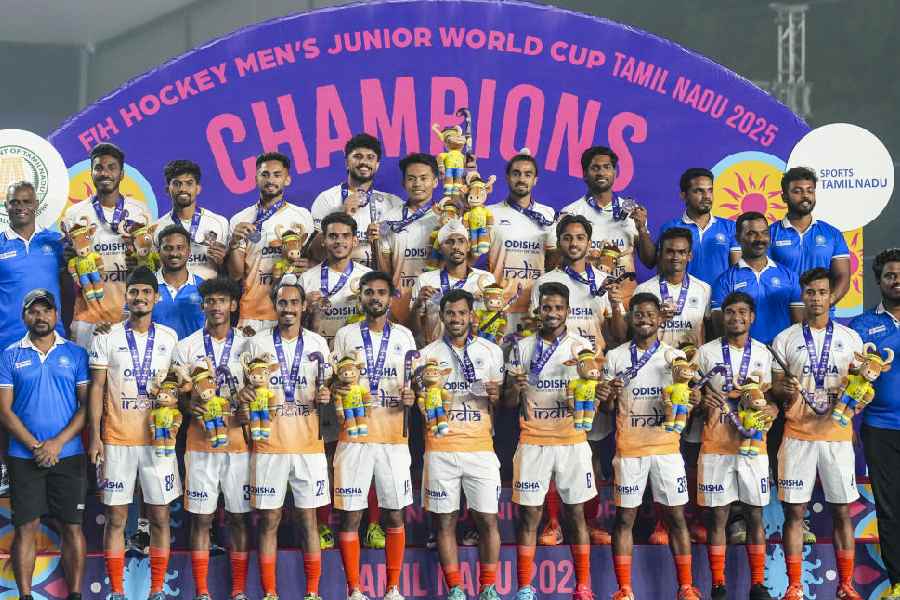 |
| Allauddin Khan (centre) with Ravi Shankar (extreme right) |
Dec. 12: At 16, Ravi Shankar was a dancing star in Europe and America, leading a “worldly life”, when he met the man who “killed his ego” and changed his life.
Ravi was then part of older brother Uday Shankar’s touring dance troupe but had discovered he had a facility with the sitar, sarod, flute and the tabla. He was struck by the idea of helping Western listeners appreciate the intricacies of Indian music.
But he soon found that as a self-taught musician, he had not penetrated very deeply. In 1936 an Indian court musician, Ustad Allauddin Khan, joined the company for a year.
“He was the first person frank enough to tell me that I had talent but that I was wasting it — that I was going nowhere, doing nothing,” Ravi Shankar said. “Everyone else was full of praise, but he killed my ego and made me humble.”
When he asked Allauddin to teach him, he was told he could learn to play the sitar only after he gave up the worldly life he was leading and devoted himself fully to his music training.
Ravi had already met Allauddin once before, in the Ustad’s home at Maihar in Madhya Pradesh, in 1934. In 1937, he gave up dancing, sold his western clothes and returned to India.
“I surrendered myself to the old way,” Ravi Shankar said, “and let me tell you, it was difficult for me to go from places like New York and Chicago to a remote village full of mosquitoes, bedbugs, lizards and snakes, with frogs croaking all night. I was just like a Western young man. But I overcame all that.”
He moved into Madina Bhavan-Shanti Kutir, the Ustad’s home in Maihar, and trained along with Allauddin’s five sons and two daughters for seven years.
Allauddin was a rigorous teacher, having undergone years of internship under Rampur’s Ustad Wazir Khan, and the training sessions would often take up 18 hours a day.
Allauddin used to recall how Wazir embraced him after two-and-a-half years of observing him. Once he was convinced of Allauddin’s commitment, he taught him all the secrets of music that only members of the Tansen family had possessed.
Allauddin trained Ravi on the sitar and surbahar and taught him ragas and the musical styles dhrupad, dhamar and khayal as well as the techniques of playing the rudra veena, rubab, and sursingar.
Later, Ravi Shankar began performing in public along with the Ustad’s son Ali Akbar and daughter Annapurna Devi, who later became his first wife. Some music connoisseurs of that era considered Annapurna more blessed than Ali Akbar and Ravi Shankar but Allauddin always laughed off the comparisons.
A devotee of Sharda Ma, Allauddin used to say his namaaz and perform puja at the temple. Mohd Nayeem, who works at the Bhopal-based Ustad Allauddin Khan Sangeet Academy, said Ravi Shankar was exposed to a composite culture at Maihar.
At his home, Allauddin had pictures of Saraswati, Hanuman, Krishna, Jesus Christ and other holy figures from various religions. Baba would read out from the Holy Quran, Ramayan and Gita to his disciples.
Annapurna stopped performing in public after her husband started touring extensively. Ravi Shankar’s divorce from her affected his ties with Ali Akbar. The two seldom played together and when they occasionally did, creating magic on the stage, no words would be exchanged offstage.
But Ravi Shankar’s devotion to Allauddin was complete. In 2004, then Prime Minister A.B. Vajpayee’s nephew Anup Mishra, culture minister in Madhya Pradesh, described Allauddin as a “Bangladeshi” and sought to rename the Allauddin Academy as Tansen Academy.
Mishra’s comment owed to confusion over Allauddin’s place of birth, Shibpur. Some believe it to be a place in Tripura, 20-odd miles from Agartala, while Mishra claimed it was a part of Comilla, now in Bangladesh.
In the US then, Ravi Shankar, who used to describe Allauddin as a “devout Hindu, devout Muslim”, took the matter up directly with Vajpayee. Mishra retracted within hours and dropped his plans to rename the academy.
Birthplace pangs
Varanasi today remembered the maestro who was brought up in the town’s Bangali-Tollah and later taught the sitar in the Sheopur locality along with Annapurna, but was eventually disillusioned with his birthplace.
The maestro had bought a house in Sheopur in the 1970s and stayed there intermittently till his divorce in the 1980s, and shifted his music institute to Delhi. He later told an interviewer he had “sunk all his money into it (the institute) and then realised I did it at a wrong place”.
He added: “I had all this sentiment for Varanasi because I was born there and have a childhood love for it. I still have that love. (But) I found that it was not the right place because it is no longer the Benares of my childhood... you know, (the) Benares that had all those great musicians, great Sanskrit vidwans (scholars), people like Bhagwandas and many others....”
Goutam Ghose
the filmmaker was a fan
I am very lucky because as a child I had gone to a concert where all the three maestros —
Allauddin Khan, Ravi Shankar and Ali Akbar Khan — played together. Allauddin Khan Sahib sat in the middle of his two students — Ravi Shankar and Ali Akbar.
When Ravi Shankar last played at Netaji Indoor Stadium (in 2009) I met him then too. I touched his feet and he asked me what new films I was busy with.
I would send him across DVDs of my films through Tanmoy (Bose). Whenever we met in Calcutta he would tell me ‘Tomar notun chhobir amay ekta DVD pathabe (Send me a DVD of your latest film)’. I had last sent him a DVD of Moner Manush, I am not sure if he could watch it.
Many, many years ago we would visit him in Ballygunge where he used to stay when he visited Calcutta. Just to talk to him. I was an aspiring filmmaker and we were very excited about Ravi Shankar because at that time he was busy with western music, George Harrison-er shathe fusion … Beatles was our favourite, so we would go and meet him with a lot of excitement.
With Pather Panchali, Aparajito and Apur Sansar, he became very famous for film music,
so many compositions, experiments….


